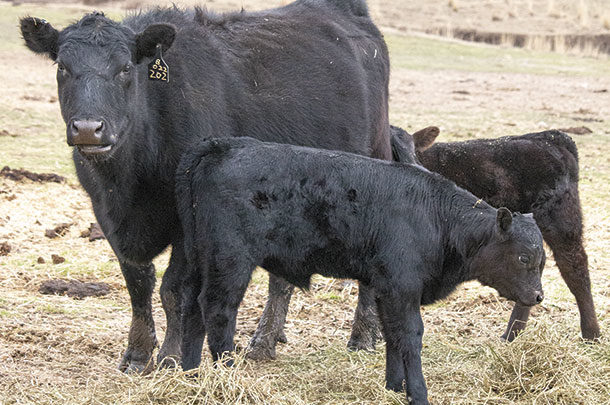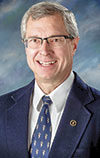As a beef producer, you may think having at least some calves with scours every season is inevitable. It’s not. In fact, having a herd with zero cases of scours should always be the goal. And it’s an achievable one.
Scours can have significant economic repercussions for your operation. Calves that had scours weigh 24 pounds less at weaning than calves that didn’t have scours. The price slide for calves right now is about $10 a hundred, so that 24 pounds is worth $25. Keep in mind, this doesn’t include factors like treatment costs and death loss – things which could make that number skyrocket. One bout of scours could set a calf back for life.
Calf scours is a multifactorial disease that needs to be tackled from different angles; there’s no silver bullet. I’ve worked with producers who, for 15 years in a row, have never had calves with scours. It is possible if you take proper precautions.
Here are five tips to help prevent scours in your herd. By following all of them, you can bring the number of scours cases on your operation down to zero and maintain a zero-scours herd.
1. Make sure calves are born in a clean environment
Having a clean environment in which cows can calve is the number one precaution you can take to ensure zero scours. Researchers at the University of Nebraska pioneered the Sandhills Calving System, which was a turning point for producers battling calf diarrhea.
First, some background: Traditionally, all cows calved in a single pasture or calving lot. When calves were a day or so old, both cow and calf were moved to a different pasture. Because calves that look healthy can shed disease organisms in the first day or two of life, the calving lot environment can become heavily contaminated and expose the entire herd to pathogens. Even worse, calves that do not nurse well or get sick are kept in the calving lot, adding to the pathogen load. In this system, calves start getting sick at an alarming rate about halfway through the calving season, with each calf born after the outbreak destined to get scours.
In contrast, the Sandhills Calving System starts with all cows calving in a single paddock (paddock No. 1) for two weeks. (Heifers calve in a separate area.) After two weeks, all pregnant cows are moved to calving paddock No. 2. During the next seven days, cows that calve in paddock No. 2 remain there with their calves, and those yet to calve are moved to paddock No. 3 and so on. This weekly movement of cows yet to calve to a clean calving pasture ensures that calves have minimal exposure to pathogens and are healthier.
2. Check that cows have an adequate body condition score (BCS) so they can provide quality nutrition to their calves
Having a BCS of 5.5 to 6 for cows and 6.5 to 7 for heifers allows them to build the optimal level of antibodies into their colostrum and to produce the highest volume of colostrum they can make. This “first milk” is the most important meal a calf will ever have.
In addition, if a cow has an optimal BCS, we know her calf will jump up and nurse faster. A newborn calf should be standing in 30 minutes and nursing 30 minutes after that. If it’s not, then there is likely a nutritional or genetic risk factor. The faster calves nurse the colostrum, the more antibodies and calories they’ll ingest, which gets them off to a better start. Calves are born with brown fat, which keeps them alive for 48 hours without eating a single thing. It makes sense to get calves nursing very quickly so they can benefit from valuable colostrum and keep some of their brown fat in reserve.
3. Vaccinate your cows
Vaccinating cows prior to calving with a high-quality vaccine helps ensure they produce targeted colostrum that offers protection specific to the diseases they’re most likely to encounter. Your herd health veterinarian can help you determine which vaccine is best suited for your specific herd.
Be sure to follow the label timing instructions for the vaccine you choose. Since colostrum starts being produced about six weeks prior to calving, it is important to have that vaccination done prior to the colostrum being made (a process called colostrogenesis).
4. Separate first-calf heifers from adult cows to ensure adequate feed consumption
Heifers due to have their first calves need to be wintered separately from the adult cow herd, and this is for a nutritional reason: There is no way a 1,000-pound first-calf heifer can compete against a 1,400-pound cow for feed and get enough to eat. That heifer is still growing and needs to be at a higher BCS than the cow when she calves. She should be in a separate place during the winter and calve in a separate area from adult cows because that heifer has not developed the breadth of immunity that older cows have.
On the other hand, older cows have been exposed to scours organisms for many calving seasons and have built up some natural immunity. Research has shown that it is 3.6 and 1.7 times more likely for the resulting calves to have neonatal disease if cows and heifers are wintered and calved together, respectively.
5. Team up with your veterinarian
I know as a boy growing up on a beef farm, sometimes when we had issues, we assumed everyone had those same issues. That’s why it’s so important to sit down with your herd health veterinarian to get their perspective on what they’ve seen with different herds. Your veterinarian brings that breadth of experience and science to the conversation with you. You as the producer can say, “Here’s how my farm works. Did you ever think about doing this? Maybe we could try this approach.” That type of back-and-forth can bring great new ideas to the forefront for both of you.
If you adopt a plan that uses the concepts of the Sandhills Calving System – namely ensuring calves are born in a clean environment and calves of a very similar age are kept together – and incorporate the additional ideas discussed here, you’re going to be in good shape in terms of scours prevention. If your veterinarian isn’t familiar with the Sandhills Calving System, or the other concepts outlined, contact a technical veterinarian at Elanco and ask to set up a call with them, you and your veterinarian to discuss what you need to do to prevent scours in your herd.
Remember: Zero scours is the (completely achievable) goal.
References omitted but are available upon request by sending an email to an editor.












